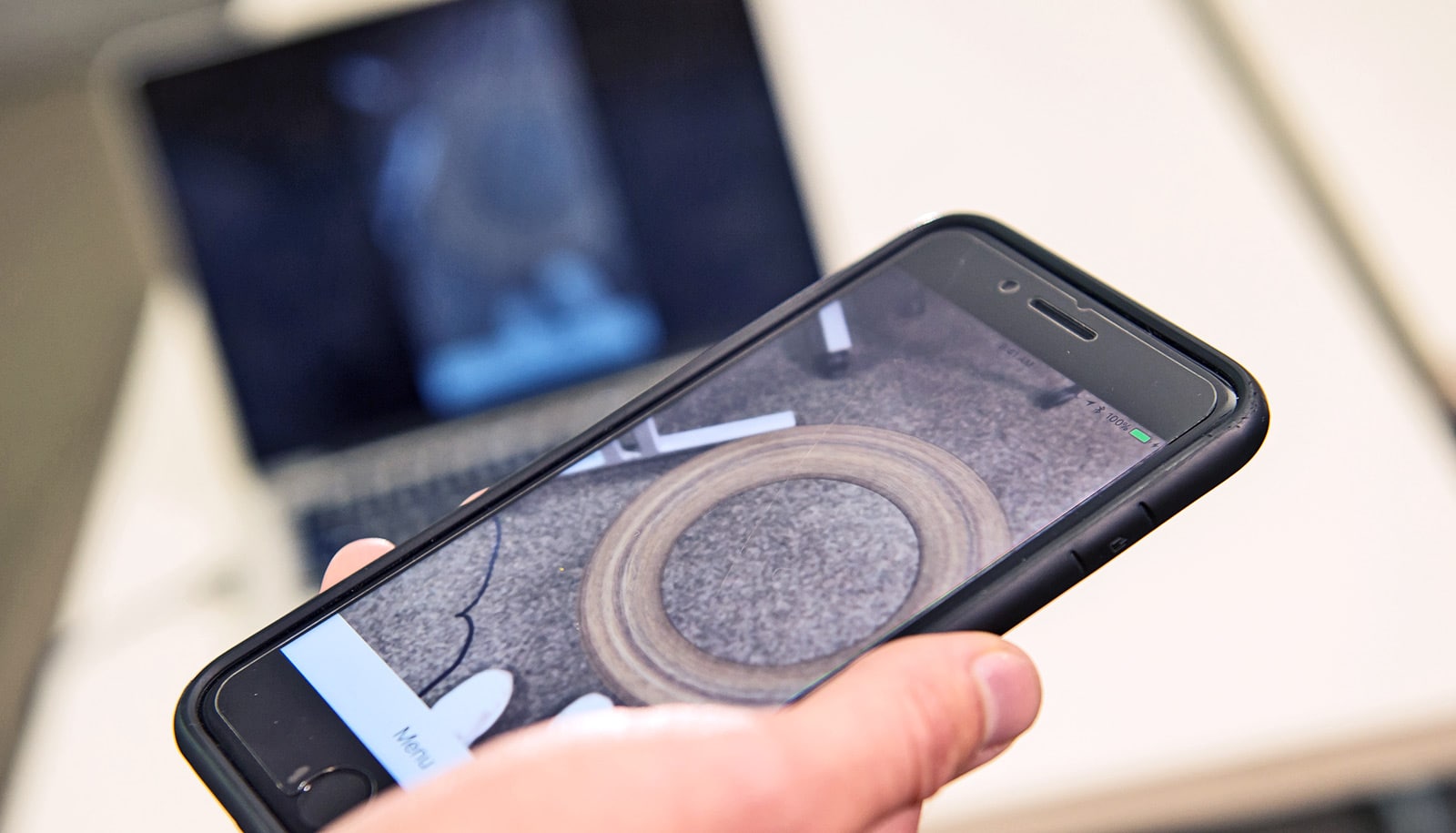A new iPhone app could help patients with Parkinson’s disease overcome a symptom known as “freezing,” in which the legs temporarily refuse to follow the brain’s command to lift and move forward.
For many of these patients, visual, audio, or vibratory cues can help them overcome freezing. The app may be the most comprehensive way to provide those cues, say the app’s creators, a team of undergraduates at Rice University.
“There are a couple of devices on the market to help them, but none of them incorporate all three kinds of cues.”
The app takes advantage of new programming tools that allow for the incorporation of augmented reality. The user can point the phone at the floor or sidewalk and trigger it to place the image of a block, circle, or other object where his or her foot should land. That visual cue is often enough to help patients initiate their gait.
The app can also provide audio or sensory cues through the phone’s sound and vibration capabilities. It should be adaptable to Android phones as well, the students say.
“This is for patients who, in their day-to-day lives, experience freezing episodes,” says Gaby Perez. “There are a couple of devices on the market to help them, but none of them incorporate all three kinds of cues.”
Perez and her Stairway to Stability teammates, all bioengineering majors, took on the challenge as their capstone design project, required of most Rice engineering seniors. The team says client and partial sponsor Nora Bynum was an influential adviser during development of the app.
The device is smaller and less expensive than what they said is currently the state of the art for patients, a cane with a laser attachment.
“Every time you place the cane down, the laser line pops up in front of you, cueing the user to step over it,” says Theresa Sonka says. “But a lot of the time, these laser solutions have trouble working outdoors.”
“What’s cool about our project is that the cheapest solutions available right now are about $200, with some solutions costing as much as $3,000,” says Jeremy David. “Our solution, however, has the potential to work more effectively and at a fraction of the cost.”
Because some patients may also experience tremors in their hands, the team created a lanyard phone case that a patient can wear to make the phone easier to manipulate.
The team worked with the Houston Area Parkinson Society to recruit patients who are helping them test the app at Rice’s Oshman Engineering Design Kitchen, says Dan Burke. “Our goal right now is to prove that the concept of augmented reality can be used in a therapeutic context while maintaining the user-friendly nature of smartphones.”
“The patients we’ve talked to are a little on the milder end and are still able to walk, but each one of them has started to see instances of freezing, whether it be just for a few seconds or on the order of minutes,” says Keshav Rao. “They’ve each talked about the mental gymnastics they go through to be able to move their feet again. They’re very interested in anything that can reduce that burden.”
Smartphone app tracks Parkinson’s symptoms
The students appreciate the irony that their solution for people with Parkinson’s would make them look like everybody else who walks down the street staring at a cellphone.
“Another big criterion was social comfort,” says Kristen Smith. “We wanted it to be a very discreet solution.”
The team plans to demonstrate the app at the annual George R. Brown School of Engineering Design Showcase on April 12.
Source: Rice University



